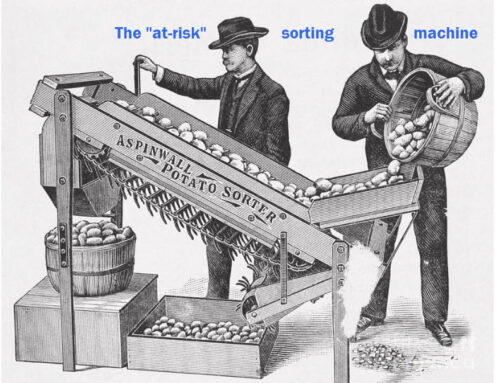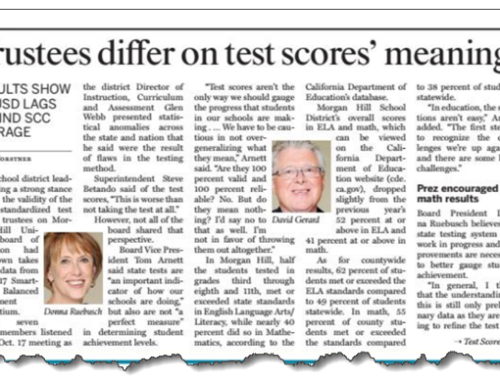For the fourth time in six years, I spent more than two exciting days at the annual conference called STATS-DC hosted by the National Center for Education. I attend to stay up-to-date on the condition of K12 data, learning from the 400-500 state agency leaders of many states’ data and technology divisions of their departments of education.
Learning is indeed the outcome for many. This is only possible because state agency leaders are ready to swap stories about their efforts to gather evidence about how schools are doing, make sense of that evidence, and promote meaningful use of it all. The climate inside the conference is far more welcoming than the hot and muggy climate outdoors. Dialogue, debate and discussion abound. Disagreements are aired with respect and civility. Presenters are as ready to share failures as successes, all in the cause of collective learning.

State education agency staff attending the NCES conference, STATS-DC (July 26, 2018)
But again, this year I was astonished at the backwardness of California. Most states have been bringing value out of their student longitudinal data systems for a decade or more. Florida got theirs going more than 30 years ago. California hasn’t really started. Let me present the evidence. (And if you doubt that our great state could be lagging so far behind, take a look at this column in CALMatters by Dan Walters, senior political analyst, journalist and author.
The education establishment and its political allies are not eager to disturb the status quo of ignorance. – Dan Walters in opinion essay, “California Has Big Void in Educational Information,” CALMatters, 8/16/2018
In prior years, Kansas’ leaders discussed improvements to their quality control of data as districts deliver it. This year, the U.S. Dept. of Education EdFacts team led a workshop on data quality assurance. It included post-submission data cleaning that state agencies should perform. California leaves quality control to districts (except for SACS financial data, which the CDE’s team vets with a fine-tooth comb).
Texas’ leaders have created data infrastructures that lighten the workload on districts, and then they deliver actionable information to teachers and admins. No Texas district needs to build a local SIS or maintain digital cume folders. California leaves data infrastructure to districts, and delivers only disconnected data tables (DataQuest) or charts (Ed Data) to users, comprised of aggregate data.
Minnesota’s leaders created data literacy programs for educators, supported by smart, energetic field trainers like Holly Pope and her team. She presented evidence of her work, including digests about assessments for teachers she both wrote and published on her state department’s website. California’s CDE creates no training supports in data literacy for teachers or anyone else.
Thirty-eight states connect their K12 student longitudinal data system to post-secondary data systems. Some like Florida even connect to pre-K and workforce data. California’s CALPADS system hasn’t even connected student level K12 administrative data to the statewide test results. Many states are buying college enrollment and persistence data from the National Student Clearinghouse, and encouraging their districts to use it. California has been talking about doing so for years. This leaves California districts to buy this data themselves, at retail rates. But buying retail is just another way to gain independence from the wholesaler, and “go local.”
With Gov. Brown’s encouragement, many districts have taken his praise of “subsidiarity” seriously. To date, about 50 districts with about 2 million students enrolled have gone not just “local,” but have gone independent by affiliating with the CORE group. The first 10 districts formed the CORE group, and invited others to join their data pool. About 40 heeded the call. “Secession” is the word this brings to mind. Their independence is admirable. But isn’t this also a vote of no-confidence in the “California way?”
In the opinion of Paige Kowalski, part of the leadership team at the Data Quality Campaign, California is at least ten years behind other states in its policies and practices, its stewardship and use, of education data. But California may soon begin to catch up. Sen. Steven Glazer (D-Orinda) has proposed a bill (SB-1224) to create a modern student longitudinal data system that tracks students from K-12 through college and into the workforce. With a new governor in place, it may have a reasonable chance of becoming law. One can only hope.






